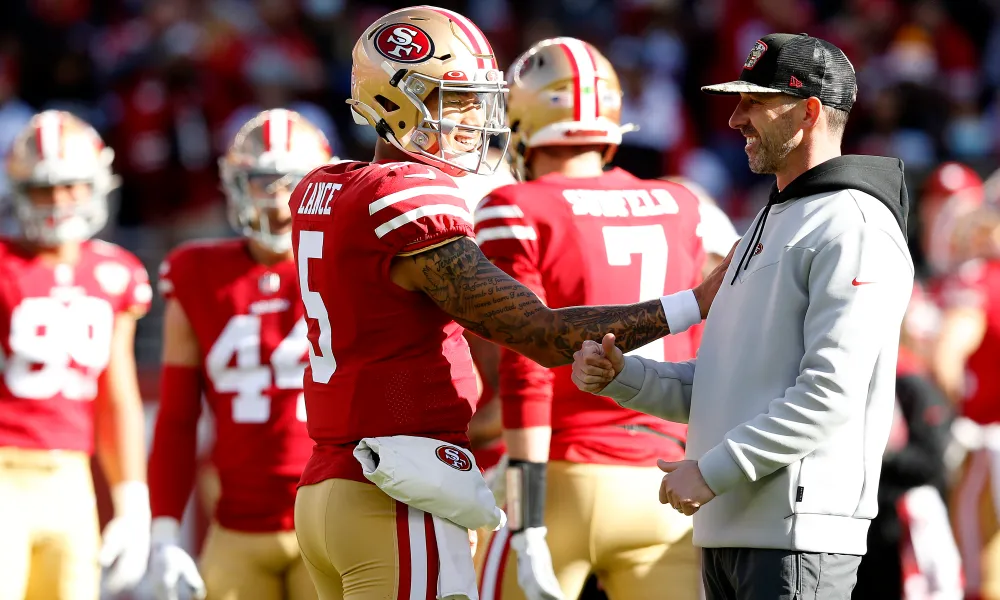The Anatomy of an Unsuccessful Draft Pick: Lessons Learned from the NFL’s Biggest Misses

Introduction to Unsuccessful Draft Picks
In the high-stakes world of the National Football League (NFL), the annual draft is a critical event that shapes the future of teams. Every year, teams invest countless hours and resources into scouting college players, evaluating their potential, and making informed decisions on who to select. However, not every draft pick turns out to be a success story. There have been numerous instances of draft picks that have failed to live up to expectations, leaving teams with a sense of regret and disappointment. In this article, we will dive deep into the world of unsuccessful draft picks, exploring their impact on NFL teams and the lessons that can be learned from these mistakes.
Impact of Unsuccessful Draft Picks on NFL Teams
The repercussions of an unsuccessful draft pick can be far-reaching and long-lasting for an NFL team. Firstly, there is an immediate impact on the team’s performance. When a highly anticipated draft pick fails to deliver on their potential, it can severely hamper the team’s ability to compete and achieve success on the field. Additionally, an unsuccessful draft pick can have financial implications, as teams invest significant sums of money in signing bonuses and contracts for their top picks. When these investments fail to yield the expected returns, it can create financial strain and limit the team’s ability to make other necessary moves in free agency or contract extensions for key players.
Furthermore, the failure of a draft pick can have intangible effects on a team’s morale and reputation. It can erode confidence in the front office’s ability to make sound decisions and lead to a loss of trust from fans and stakeholders. In a league where public perception and fan support are crucial, the ramifications of an unsuccessful draft pick extend beyond the playing field.
Factors Contributing to Unsuccessful Draft Picks
Several factors contribute to the occurrence of unsuccessful draft picks in the NFL. One of the primary factors is the inherent uncertainty and unpredictability of player evaluation. Despite the extensive scouting and evaluation process, there are no guarantees when it comes to projecting how a college player will transition to the professional level. It is a complex task that involves assessing not only a player’s physical abilities but also their mental makeup, character, and ability to adapt to the demands of the NFL.
Another factor that can lead to unsuccessful draft picks is the pressure to fill immediate needs. NFL teams often have pressing roster needs that they aim to address through the draft. However, this urgency can sometimes lead to teams reaching for players who may not be the best long-term fit or possess the necessary skills to succeed at the next level. The desire for immediate impact can cloud judgment and result in poor decision-making.
Lastly, the lack of a comprehensive support system for young players can also contribute to their downfall. The transition from college to the NFL is a significant leap, both physically and mentally. Without proper guidance, mentorship, and development, even the most talented prospects can struggle to adapt and reach their full potential.
Case Studies of Notable Unsuccessful Draft Picks
To truly understand the lessons to be learned from unsuccessful draft picks, it is essential to examine some notable case studies. One such example is Ryan Leaf, who was selected as the second overall pick by the San Diego Chargers in the 1998 NFL Draft. Leaf was highly touted as a talented quarterback, but his career was plagued by poor performance, injuries, and off-field issues. His struggles serve as a cautionary tale about the importance of character evaluation and the potential consequences of overlooking red flags.
Another infamous example is Jamarcus Russell, the first overall pick in the 2007 NFL Draft by the Oakland Raiders. Russell possessed immense physical talent but lacked the work ethic and dedication required to succeed at the professional level. His lack of commitment and poor performance led to his ultimate downfall, leaving the Raiders with a major bust and a significant setback for the franchise.
These case studies highlight the importance of not just evaluating physical talent but also considering intangible qualities such as character, work ethic, and dedication. They serve as reminders that success in the NFL requires more than just raw ability.
Lessons Learned from Unsuccessful Draft Picks
The failures of unsuccessful draft picks offer valuable lessons for NFL teams and decision-makers. Firstly, it emphasizes the need for thorough player evaluation. Evaluating college players is a complex task that requires a multi-faceted approach. Teams must consider not only a player’s physical abilities but also their mental makeup, character, and growth potential. This holistic evaluation process can help identify red flags and mitigate the risk of drafting players who may not succeed at the professional level.
Secondly, teams must prioritize long-term potential over short-term needs. While addressing immediate roster needs is important, it should not come at the expense of selecting players with the highest potential for long-term success. Building a sustainable and competitive team requires a balance between short-term fixes and long-term investments.
Lastly, teams must invest in the development and support of their young players. The transition to the NFL is a challenging one, and without the proper guidance and resources, even the most talented prospects can struggle to reach their full potential. By providing a comprehensive support system, teams can maximize the chances of their draft picks succeeding and avoid the pitfalls of underdevelopment.
Strategies to Avoid Making Unsuccessful Draft Picks
To avoid making unsuccessful draft picks, teams can employ several strategies. Firstly, conducting thorough background checks and character evaluations is paramount. This involves not only evaluating a player’s on-field performance but also delving into their personal life, work ethic, and ability to handle pressure. By identifying potential red flags early on, teams can make more informed decisions and minimize the risk of selecting players who may not meet expectations.
Secondly, teams should prioritize building a strong scouting and player evaluation department. This involves investing in experienced personnel who have a deep understanding of the game and possess the ability to identify talent and potential. By having a robust scouting department, teams can ensure that they have the necessary information to make informed decisions and avoid costly mistakes.
Lastly, teams should embrace analytics and data-driven decision-making. While traditional scouting methods are still essential, incorporating advanced analytics can provide teams with additional insights and help identify hidden gems or undervalued prospects. By utilizing both qualitative and quantitative approaches to player evaluation, teams can enhance their chances of making successful draft picks.
The Importance of Scouting and Player Evaluation
Scouting and player evaluation is the backbone of successful draft picks in the NFL. The process involves a meticulous examination of college players, assessing their physical abilities, football IQ, character, and growth potential. It requires a keen eye for talent and the ability to project how a player will perform at the professional level. Without a robust scouting and player evaluation system, teams are left to make decisions based on incomplete information, increasing the risk of making unsuccessful draft picks.
A comprehensive scouting and player evaluation department is crucial for identifying potential stars, uncovering hidden gems, and avoiding costly mistakes. By investing in experienced scouts, utilizing advanced analytics, and conducting thorough evaluations, teams can increase their chances of selecting players who will contribute positively to their organization.
How Teams Can Recover from Unsuccessful Draft Picks
Recovering from an unsuccessful draft pick can be a challenging and delicate process for NFL teams. However, it is not an impossible task. One strategy is to focus on player development and provide the necessary support for the struggling player. By investing in coaching, mentorship, and resources, teams can help the player overcome their shortcomings and reach their full potential.
Another approach is to learn from the mistakes and adjust the evaluation process. By conducting a thorough post-mortem analysis of unsuccessful draft picks, teams can identify areas of improvement and refine their player evaluation methods. This continuous learning and improvement can help prevent similar mistakes in the future and increase the chances of making successful draft picks.
Lastly, teams can also explore trade opportunities to salvage value from unsuccessful draft picks. By identifying teams that may value the player differently or need their specific skill set, teams can potentially recoup some of the investment and acquire assets that better fit their needs.
Examples of Successful Draft Picks
While unsuccessful draft picks garner much attention, it is equally important to acknowledge and learn from successful ones. Countless NFL stars and Hall of Famers were once draft picks who lived up to or exceeded expectations. One such example is Tom Brady, who was selected in the sixth round of the 2000 NFL Draft by the New England Patriots. Despite his low draft position, Brady went on to become one of the greatest quarterbacks in NFL history, winning multiple Super Bowl championships and earning numerous individual accolades.
Another success story is Patrick Mahomes, who was selected as the tenth overall pick by the Kansas City Chiefs in the 2017 NFL Draft. Mahomes quickly established himself as a superstar, earning the league’s MVP award and leading the Chiefs to a Super Bowl victory in just his third season.
These success stories highlight the importance of diligent scouting, thorough player evaluation, and a bit of luck. The NFL draft is a complex and unpredictable process, but by employing the right strategies and making informed decisions, teams can uncover hidden gems and secure the foundation for future success.
Conclusion
The NFL draft is a high-stakes event that can shape the future of teams for years to come. However, it is not without its risks and uncertainties. Unsuccessful draft picks can have far-reaching implications, impacting a team’s performance, finances, and reputation. By understanding the factors that contribute to unsuccessful draft picks and studying case studies of notable failures, teams can learn valuable lessons and make more informed decisions in the future.
Thorough player evaluation, prioritizing long-term potential, and investing in player development are essential strategies to avoid making unsuccessful draft picks. Additionally, teams should embrace analytics and data-driven decision-making to enhance their evaluation process. By employing these strategies and learning from both successful and unsuccessful draft picks, teams can increase their chances of drafting players who will contribute positively to their organization and ultimately achieve success on the field.
The NFL draft is a continuous learning process, and teams must adapt and refine their methods to stay ahead in a highly competitive league. By learning from past mistakes and continuously improving their scouting and player evaluation processes, teams can minimize the risk of unsuccessful draft picks and position themselves for long-term success.


